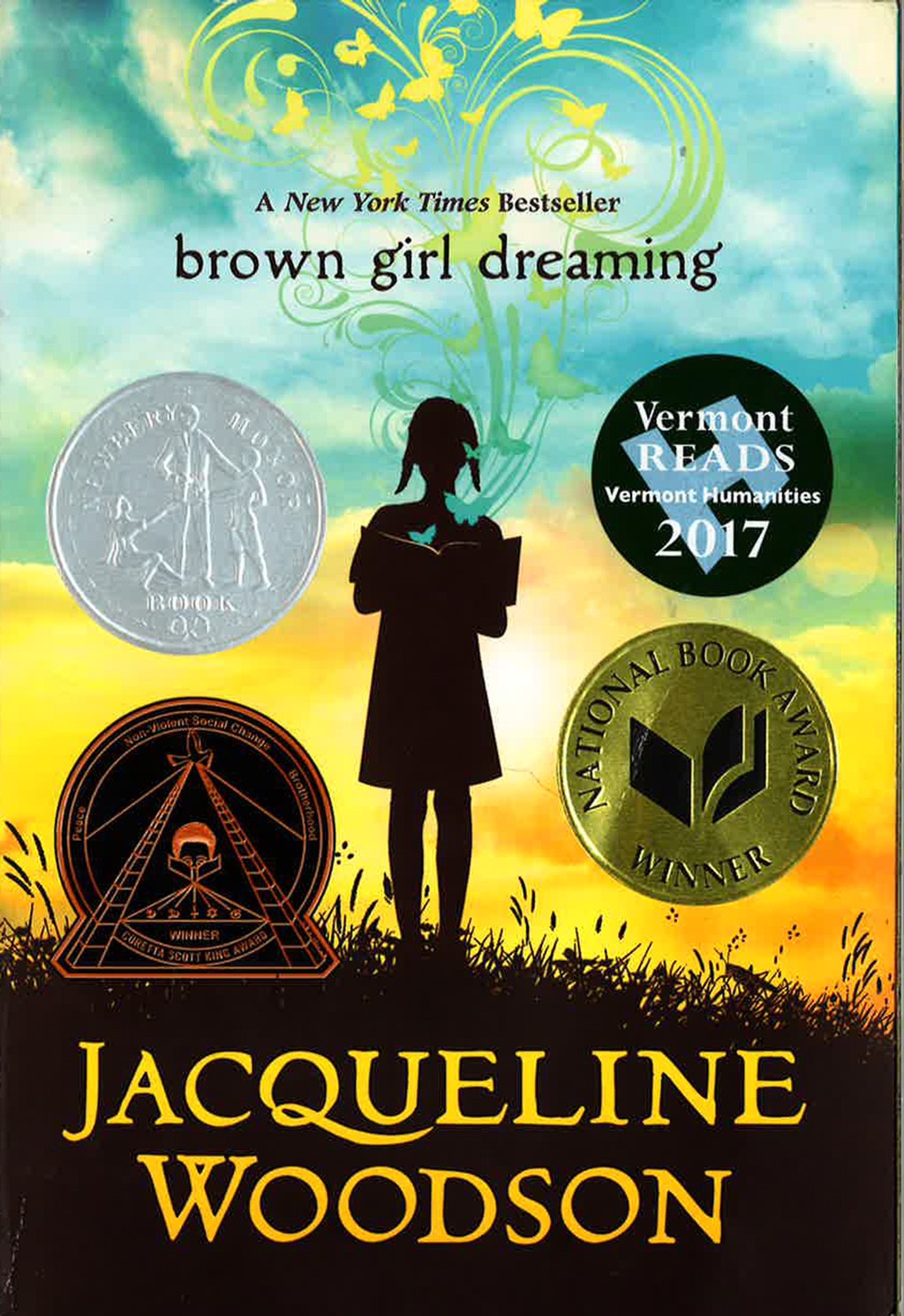A Brown Girl Dreaming: Jacqueline Woodson

BIBLIOGRAPHY: Woodson ,Jacqueline (NRT). Brown Girl Dreaming. Penguin Group USA, 2014. ISBN:978-0-399-25251-8
PLOT SUMMARY:
Brown Girl Dreaming is a memoir of Jacqueline Woodson growing up in South Carolina and New York. In vivid poems, she shares what it is like to grow up as an African American in the 1960s and 1970s, living with the remnants of Jim Crow and her growing awareness of the Civil Rights movement. The poem both touching and powerful, is accessible and emotionally charged, each line a glimpse into a child’s soul as she searches for her place in the world.
ANALYSIS: Brown Girl Dreaming is a poetic memoir about a childhood constantly in transition during the civil rights movement and segregation. Jacqueline “Jackie” Woodson was born on February 12, 1963, and that’s the day her story begins. Wide in its scope and ambitious in its reach, Brown Girl Dreaming is both personal and politically relevant. The one entitled “the beginning” is not actually at the beginning of the book, but its contents reveals what Woodson consider to be the beginning of her story as a writer, when her older sister, Dell, teaches her how to write the first initial of her first name, “Love the sound of the letter and the promise that one day this will be connected to a full name, my own, that I will be able to write, by myself.” (Woodson,p.62) Set against the backdrop of one of the most unpredictable times in our country’s young history, Brown Girl Dreaming tells a story much simpler and beautiful, of how Woodson fell in love with reading and writing, first with the help of others, and then on her own in the pages of a crisp white composition notebook. “When my sister reads to me, I wait for the moment when the story moves fast—toward the happy ending that I know is coming.” Woodson keeps her readers hoping for that happy ending as well, which is an interesting sensation to have when you’re reading a book that you already know the “ending” to. As racial tension continues to ramp up and break free (both in the late 1960s and now) with the rapidity of steam engine train, Woodson’s memoir is just one magnifying glass giving necessary context to what we read about in the news.
USE: One of the poems from the book show a highlight on the analysis is Ghost. "So you can still see the words, right there like a ghost standing in front still keeping you out. (92) Jacqueline uses this simile to describe signs saying "WHITE ONLY" (92) that were painted over but still somewhat visible in building around Greenville, South Carolina. By comparing the words to a ghost, the author shows that even when the laws regarding discrimination changed, racism and prejudice did not completely disappear. Like a ghost, racism lingered long after its supposed death by the abolishing of Jim Crow laws.
Before reading the memoir, I would present a mini lesson on memoirs. Then read the example and after reading have an open discussion about what the memoir meant to them. Students can create their own memoir to reflect their personal knowledge or history about themselves or on something learned.
Comments
Post a Comment